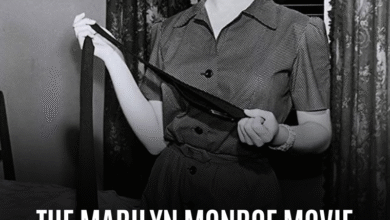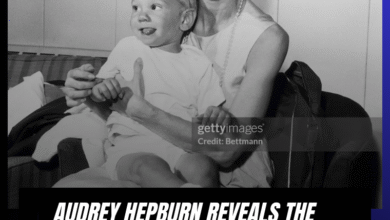Marilyn Monroe’s Darkest Secret: The One Thing She Hated About Acting That Almost Ruined Her Career
OPINION: This article may contain commentary which reflects the author's opinion.
Marilyn Monroe, a name that is forever linked to Hollywood glamour and iconography, had a career marked by both tremendous success and profound frustration. Known for her iconic roles in Gentlemen Prefer Blondes (1953) and Some Like It Hot (1959), Monroe was often cast in films that emphasized her striking beauty and the “dumb blonde” archetype, a role she initially embraced but eventually came to despise. Despite her talents and desire to be recognized for her acting ability, Monroe struggled with being pigeonholed into one-dimensional roles, and this typecasting became the one thing she hated most about acting.
The Struggle of Typecasting
Born in 1926, Monroe’s career skyrocketed in the 1950s, but it was not without challenges. After gaining recognition for her sultry persona and comedic timing, studios—particularly 20th Century Fox—often cast her in roles that leaned heavily on her physical appearance rather than her acting prowess. While these roles, including her famous turn in Gentlemen Prefer Blondes, brought Monroe immense popularity and financial success, they also confined her to a particular image that she increasingly sought to escape.
Monroe’s desire to break free from the “dumb blonde” stereotype was a recurring theme in her career. While she was known for her comedic chops, she also yearned for more dramatic roles that would showcase her acting depth. Films like Bus Stop (1956), where she portrayed a more complex character, were marketed as her big break into serious acting, but the public’s continued preference for her in comedic roles reinforced the typecasting that Monroe found limiting.
The Misfits: A Movie That Echoed Her Struggles
One of the most telling examples of Monroe’s frustration with her image came with her role in The Misfits (1961), written by her then-husband, Arthur Miller. The film, which explored themes of isolation and personal turmoil, mirrored Monroe’s own struggles, as the character she played was rewritten to resemble her. This uncomfortable alignment between her personal life and the role she was portraying added to her unease, further compounding her frustration with the industry’s attempt to mold her into a certain type of star.
Beyond the emotional strain, Monroe also faced technical difficulties on set. Reports from colleagues and film historians note that she struggled with remembering lines, often arrived late to set, and had trouble hitting marks—issues that were exacerbated by her lack of confidence. In The Misfits, she required hospital stays and heavy makeup to hide the toll her health issues, including endometriosis and increasing drug use, had on her body. This physical and emotional turmoil made her work difficult, and the interpersonal tensions on set only added to her stress.
The Public’s Role in Reinforcing Typecasting
While Monroe undoubtedly played a role in shaping her public image, the demand for her “dumb blonde” persona came primarily from the public and the studios. Films like The Seven Year Itch (1955) and Some Like It Hot (1959) earned millions at the box office, largely due to Monroe’s ability to captivate audiences with her comedic charm and beauty. On the other hand, her more dramatic roles, such as Niagara (1953), did not yield the same financial success, further convincing studios to stick with what worked.
Monroe’s frustration with this typecasting was compounded by her awareness of the financial incentives at play. As long as her comedic roles continued to rake in profits, studios had little reason to cast her in more serious parts, reinforcing the perception that she was a commodity, rather than a versatile actress deserving of complex roles.
Quotes and Personal Reflections: A Desire for Artistic Depth
While Monroe rarely spoke publicly about her distaste for acting, there are several quotes and personal reflections that suggest she resented the constraints it placed on her. She once expressed a desire to be “an actress with integrity,” which speaks to her aspiration for artistic depth beyond the shallow roles she was often assigned. Her choice to continue accepting comedic roles, even in her later career, despite her ongoing struggles, reveals the complicated relationship she had with the roles she was offered.
Monroe’s personal difficulties, including her strained relationships and personal health issues, also played a significant role in her disillusionment with the industry. The pressure to maintain a public image while grappling with personal turmoil made it difficult for her to pursue the kind of roles she truly wanted.
The Enigma of Monroe’s Career
Some have argued that if Monroe had fully embraced her typecasting and accepted her image as a comedic actress, she might have had a happier, less tumultuous career. However, this would have gone against her natural inclination to grow as an artist and challenge the expectations placed upon her. In many ways, Monroe’s desire for artistic freedom and her discomfort with being typecast as the “dumb blonde” epitomize the struggles of an actress caught between public perception and personal ambition.
Ultimately, Monroe’s career was marked by a series of contradictions. She was both a beloved star and a frustrated artist, trapped in a system that valued her appearance over her talent. The “one thing” she hated about acting—the limitations imposed by typecasting—was not just a personal frustration but a reflection of the broader pressures faced by many women in Hollywood during her time.
Conclusion: Monroe’s Lasting Legacy
Marilyn Monroe’s legacy as an actress and cultural icon endures to this day, but the challenges she faced in her career continue to resonate. Her struggle with typecasting, while ultimately defining her Hollywood persona, was a significant source of frustration throughout her career. Monroe’s desire to be recognized for her talent, rather than her image, speaks to the broader issues of exploitation and limitation faced by women in the film industry, both in her time and in the decades that followed.



